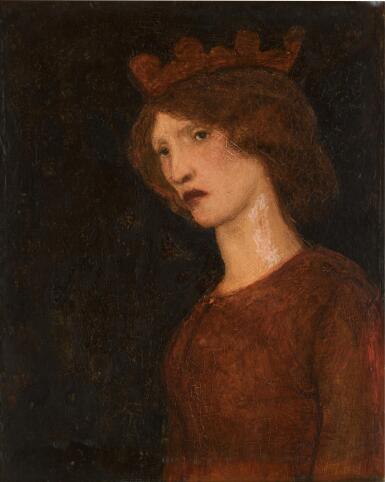European & British Paintings Day Auction
European & British Paintings Day Auction

Property from a British Private Collection
Sir Edward Coley Burne-Jones, Bt., A.R.A., R.W.S.
Juno
Auction Closed
December 7, 01:32 PM GMT
Estimate
15,000 - 20,000 GBP
Lot Details
Description
Property from a British Private Collection
Sir Edward Coley Burne-Jones, Bt., A.R.A., R.W.S.
British
1833 - 1898
Juno
oil on panel
Unframed: 19.7 by 16.2cm., 7¾ by 6½in.
Framed: 35 by 31cm., 13¾ by 12¼in.
Maas Gallery, London, November 1970; where purchased by a private collector
Thence by descent
London, Maas Gallery, Pre-Raphaelitism - Exhibition of Paintings, Drawings & Watercolours, November 1970, no. 2
The fascinating and intense Juno almost certainly dates from 1861 (despite the date of 1862 on the reverse which is in another, later hand), contemporary with another small painting in oil of a classical goddess interpreted in a medieval style, Venus (private collection). It is one of Burne-Jones’ earliest oil paintings – if not the first that he completed - painted only a year after the small but magnificent pair of watercolours Sidonia von Bork (Tate) and Clara von Bork (Tate).
There are two credible identities for the model for Juno. One possibility is that it depicts the artist's wife Georgiana, one of the remarkable MacDonald sisters - one of whom married the painter Edward Poynter whilst two of the siblings were the mothers of Stanley Baldwin and Rudyard Kipling. Edward Burne-Jones married Georgiana MacDonald in June 1860 and the title Juno may relate not only to the month of their marriage but to her position in his life – a depiction as the Queen of the Goddesses could be no higher compliment. A year later Burne-Jones painted The Rose Bower (sold in these rooms, 19 June 1984, lot 27) which certainly depicts Georgiana and she is also thought to be the model for Sidonia von Bork. However, it is also possible that Juno depicts the statuesque Jane Morris, wife of Burne-Jones' collaborator and great friend, William Morris. Following their wedding the newly-married Burne-Joneses stayed at Red House at Upton in Kent - the recently completed home of William and Jane Morris. It is possible that Burne-Jones painted Jane Morris as a Goddess because of her stately nature and as a mark of his respect for her. In either case, this small painting is a significant picture as one of the earliest oil paintings by a leading light of British art who had not yet reached the age of thirty.
